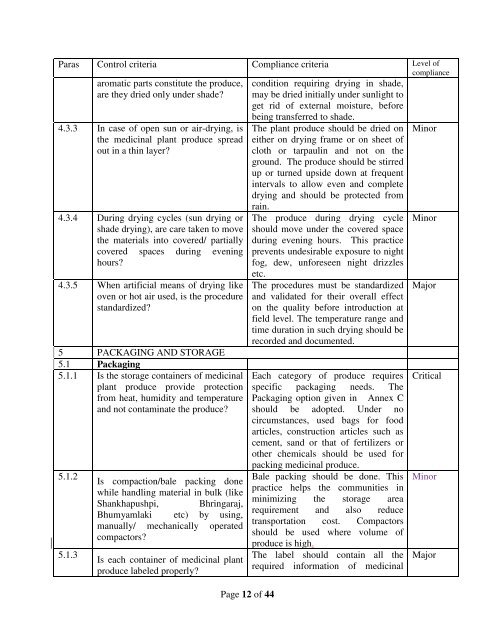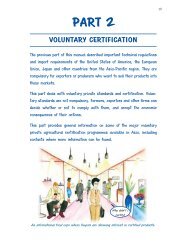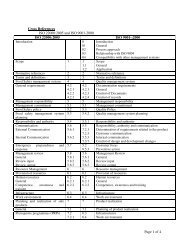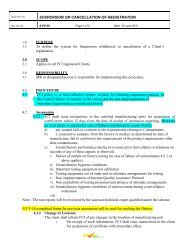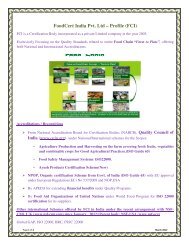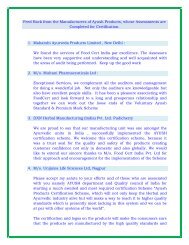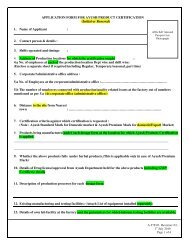Standard for Good Field Collection Practices - NMPB
Standard for Good Field Collection Practices - NMPB
Standard for Good Field Collection Practices - NMPB
Create successful ePaper yourself
Turn your PDF publications into a flip-book with our unique Google optimized e-Paper software.
Paras Control criteria Compliance criteria Level of<br />
compliance<br />
aromatic parts constitute the produce,<br />
are they dried only under shade?<br />
4.3.3 In case of open sun or air-drying, is<br />
the medicinal plant produce spread<br />
out in a thin layer?<br />
4.3.4 During drying cycles (sun drying or<br />
shade drying), are care taken to move<br />
the materials into covered/ partially<br />
covered spaces during evening<br />
hours?<br />
4.3.5 When artificial means of drying like<br />
oven or hot air used, is the procedure<br />
standardized?<br />
5 PACKAGING AND STORAGE<br />
5.1 Packaging<br />
5.1.1 Is the storage containers of medicinal<br />
plant produce provide protection<br />
from heat, humidity and temperature<br />
and not contaminate the produce?<br />
5.1.2<br />
5.1.3<br />
Is compaction/bale packing done<br />
while handling material in bulk (like<br />
Shankhapushpi, Bhringaraj,<br />
Bhumyamlaki etc) by using,<br />
manually/ mechanically operated<br />
compactors?<br />
Is each container of medicinal plant<br />
produce labeled properly?<br />
Page 12 of 44<br />
condition requiring drying in shade,<br />
may be dried initially under sunlight to<br />
get rid of external moisture, be<strong>for</strong>e<br />
being transferred to shade.<br />
The plant produce should be dried on<br />
either on drying frame or on sheet of<br />
cloth or tarpaulin and not on the<br />
ground. The produce should be stirred<br />
up or turned upside down at frequent<br />
intervals to allow even and complete<br />
drying and should be protected from<br />
rain.<br />
The produce during drying cycle<br />
should move under the covered space<br />
during evening hours. This practice<br />
prevents undesirable exposure to night<br />
fog, dew, un<strong>for</strong>eseen night drizzles<br />
etc.<br />
The procedures must be standardized<br />
and validated <strong>for</strong> their overall effect<br />
on the quality be<strong>for</strong>e introduction at<br />
field level. The temperature range and<br />
time duration in such drying should be<br />
recorded and documented.<br />
Each category of produce requires<br />
specific packaging needs. The<br />
Packaging option given in Annex C<br />
should be adopted. Under no<br />
circumstances, used bags <strong>for</strong> food<br />
articles, construction articles such as<br />
cement, sand or that of fertilizers or<br />
other chemicals should be used <strong>for</strong><br />
packing medicinal produce.<br />
Bale packing should be done. This<br />
practice helps the communities in<br />
minimizing the storage area<br />
requirement and also reduce<br />
transportation cost. Compactors<br />
should be used where volume of<br />
produce is high.<br />
The label should contain all the<br />
required in<strong>for</strong>mation of medicinal<br />
Minor<br />
Minor<br />
Major<br />
Critical<br />
Minor<br />
Major


